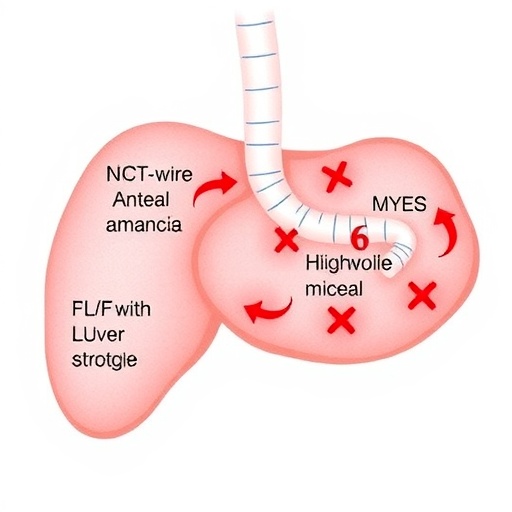In a groundbreaking study published in the journal Cancer Screening and Prevention, researchers have unveiled compelling evidence linking elevated serum 25-hydroxyvitamin D [25(OH)D] levels to an increased risk of skin cancer. This observation adds a new dimension to the complex relationship between ultraviolet (UV) radiation exposure, vitamin D biosynthesis, and carcinogenesis in the skin. Utilizing both extensive epidemiological data from the National Health and Nutrition Examination Survey (NHANES) spanning nearly two decades and robust Mendelian randomization (MR) techniques, the study provides some of the most comprehensive insights to date. It challenges conventional perceptions of vitamin D’s protective roles while offering a novel perspective on its role as a biomarker for skin cancer risk assessment.
Vitamin D synthesis is predominantly triggered by UVB radiation-induced conversion of 7-dehydrocholesterol in epidermal keratinocytes to previtamin D3, subsequently metabolized to 25(OH)D in the liver. Traditionally, serum 25(OH)D levels serve as a proxy for vitamin D status, often lauded for its beneficial effects on bone health and immune modulation. However, the conundrum arises because UV exposure, while essential for vitamin D production, is also the principal risk factor for cutaneous malignancies. This duality has made discerning the independent effects of circulating 25(OH)D challenging. The present study delves into this interplay with rigorous statistical and genetic methodologies.
The researchers analyzed data from 21,357 U.S. adults who participated in NHANES from 1999 through 2018, including 631 individuals diagnosed with various forms of skin cancer. The epidemiologic analysis revealed that individuals with higher serum 25(OH)D concentrations demonstrated significantly elevated odds of developing nonmelanoma skin cancer, melanoma, and other skin cancers. Specifically, the odds ratio (OR) for nonmelanoma skin cancer was calculated at 2.94 (95% confidence interval [CI]: 2.10–4.20), effectively tripling the risk in individuals with increased vitamin D levels. Melanoma showed a comparable OR of 2.94 (95% CI: 1.73–5.28), underscoring the consistency of the association across skin cancer subtypes.
To address causality – a critical aspect often limiting observational findings – the study employed Mendelian randomization analysis leveraging genetic variants identified through genome-wide association studies (GWAS). MR leverages the random allocation of alleles at birth to mimic the design of a randomized controlled trial, thereby minimizing confounding factors and reverse causation. The analyses confirmed a causal relationship between genetically predicted increases in serum 25(OH)D and heightened susceptibility to nonmelanoma skin cancer, with a modest but statistically significant OR of 1.01 (95% CI: 1.00–1.02). Melanoma’s causal association, while present, was less pronounced (OR 1.00, 95% CI: 1.00–1.01), suggesting a more complex or multifactorial etiology in this subtype.
One intriguing nuance of the findings pertains to demographic stratifications. The study underscored that males, older adults, and individuals with obesity exhibited the highest risk increments associated with elevated 25(OH)D levels. This demographic specificity can reflect variations in behavior patterns influencing UV exposure, vitamin D metabolism, and genetic predisposition to skin cancer. For example, males generally engage in more outdoor activities with less protective measures, potentially accumulating more UV damage. Similarly, obesity’s role may relate to altered vitamin D bioavailability or systemic inflammation contributing to carcinogenesis.
While the causal connection between vitamin D levels and skin cancer risk might be counterintuitive given vitamin D’s reputed antineoplastic properties, this research emphasizes the critical confounding factor of cumulative UV exposure. Essentially, high serum 25(OH)D concentrations could be a surrogate biomarker indicating extensive UV exposure rather than a direct carcinogen. UV radiation induces DNA damage, promotes mutagenesis, and alters immune surveillance in the skin microenvironment, fostering malignant transformation. Therefore, elevated vitamin D levels might flag individuals with inadequate UV protection, thus reflecting heightened carcinogenic risk.
Importantly, this nuanced understanding has substantial clinical implications. The authors advocate for routine monitoring of serum 25(OH)D as part of skin cancer risk stratification frameworks, particularly in high-risk subpopulations. Integrating 25(OH)D screening with vigilant UV management strategies—such as behavioral counseling, protective clothing, and sunscreen use—could enhance early detection and prevention protocols. Moreover, vitamin D screening might become a non-invasive, easily accessible tool in dermatological practice to identify individuals warranting closer surveillance.
The study’s strengths include its large, nationally representative cohort and advanced genetic methodologies, lending weight to the robustness and generalizability of the conclusions. However, limitations exist, such as the predominance of data derived from Caucasian populations, necessitating validation in multiethnic cohorts to confirm applicability worldwide. Additionally, the modest effect sizes from MR analyses highlight the polygenic and multifactorial nature of skin cancer etiology, indicating that vitamin D is one piece within a broader etiological puzzle.
Beyond epidemiology, these findings prompt a reexamination of vitamin D supplementation guidelines, particularly in populations at risk for skin cancer. While vitamin D insufficiency remains a legitimate health concern, indiscriminate supplementation without considering UV exposure history may inadvertently increase cancer risk markers. Future research should thus focus on stratifying recommendations by individual risk profiles, incorporating genomic, environmental, and lifestyle parameters in a precision medicine framework.
The integration of multilevel data—spanning genomics, metabolomics, and comprehensive clinical phenotyping—might unlock deeper mechanistic insights into how vitamin D metabolism intersects with carcinogenic pathways. Investigations into how vitamin D receptor polymorphisms, epigenetic modifications, and systemic inflammatory states modify skin cancer risk could further personalize screening and prevention strategies.
In summary, the study not only uncovers a significant association and potential causality between serum 25(OH)D and skin cancer risk but also reframes the role of vitamin D in dermatological oncology. It champions a paradigm shift where vitamin D status serves not only as a marker of nutritional health but also as an insightful biomarker for cumulative UV damage and skin cancer susceptibility. As clinicians and public health experts translate these findings into practice, nuanced patient counseling and individualized risk management will be paramount.
This landmark research heralds an era where vitamin D measurement, previously simple and routine, acquires newfound importance in cancer prevention. By bridging epidemiology with genetic insights, it exemplifies the power of multidisciplinary approaches in unraveling complex disease processes. The call for diverse cohort validations and mechanistic explorations heralds a promising frontier in precision oncology and preventive dermatology.
Subject of Research: Association between Serum 25-Hydroxyvitamin D Levels and Skin Cancer Risk
Article Title: Association between Serum 25-Hydroxyvitamin D Levels and Skin Cancer Risk: An Observational Study Based on NHANES and Mendelian Randomization Analysis
News Publication Date: 30-Jun-2025
Web References:
Cancer Screening and Prevention Journal
DOI Link
Keywords: Skin cancer, Melanoma, Vitamin D, Serum 25-hydroxyvitamin D, Mendelian randomization, Ultraviolet exposure, Carcinogenesis, Epidemiology, Genetic association
Tags: cancer prevention and vitamin D researchepidemiological study on vitamin DMendelian randomization in health researchNHANES vitamin D data analysisprotective roles of vitamin D re-evaluatedserum 25-hydroxyvitamin D levelsSkin cancer risk factorsskin health and vitamin D levelsultraviolet radiation and skin cancerUV exposure and vitamin D synthesisvitamin D as a biomarker for cancervitamin D biosynthesis and carcinogenesis





